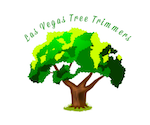|
Maintaining a tree’s health is a vital process that requires both knowledge about trees and time to ensure that they grow from seedlings to fully mature plants. The process starts from tree nurseries till a seedling develops into a fully grown tree.
Selecting Quality Seedlings It is essential to select a quality seedling from nurseries for planting. First, inspect the general health of the seedling. Check the roots, crown, branches and foliage to ensure there are no injuries and pest infections. Root structure can simply be inspected by washing away the soil with water, ensure the roots flare away evenly from the trunk with no visible deformations such as kinks and girdling. The trunk’s taper and caliper should also be even with its height. This will ensure that a tree will be able to withstand wind load and grow unsupported. Branches and foliage should be health, green with an even distribution both vertically and laterally. Proper Planting Having the proper knowledge about planting will ensure that young trees survive. Experts advise that fall is the best planting season due to soil warmth and adequate moisture. The growing site should be evaluated before planting, soil type and drainage should be taken into consideration first. Compactness can be correct by tilling and irrigation. Planting holes should be at least twice the root balls diameter. Its depth should also match the root balls length. Young trees should be placed in the hole immediately after being removed from the nursery container to avoid drying. It’s imperative to fill the hole immediately but not to the brim. Ensure the soil is firm to avoid settling and water it thereafter. Use of fertilizers is not essential at this stage but one can start applying after a month. Another vital point is to ensure that separation between trees is at least 12 inches to avoid competition that can lead to stunted growth. Staking Staking can be done to provide support for weak trunk from wind or interference by pedestrians. It can be done by using two wooden stakes dug into the ground on either side of a young tree which are then tied to the tree using smaller branches or strings. A wire caging can also be used to avoid vandalism. Ties should be routinely checked to avoid girdling and restriction of the trunk growth Tree Training Just like small kids, young trees also need training. The training process includes; discarding dead, dying, broken and diseased branches, removing branches that are larger than one-third of the trunk and selecting a central leader branch while eliminating any competition. Pruning Trees that have been properly trained require little pruning after they mature. Pruning is generally done to eliminate dead, weak, competing and undesirable branches to improve a tree’s appearance. Pruning involves crown thinning and raising. Thinning improves light penetration in case a tree has thick foliage, it involves cutting away some of the branches to reduce their number. Crown raising, on the other hand involves cutting away the lower branches to create space or to avoid interference from pedestrians. For any tree related questions, fill free to give us a call at (702) 793-2711
0 Comments
Leave a Reply. |
|
Check Us Out On Social Media
|
Website by Las Vegas Tree Trimmers


 RSS Feed
RSS Feed
